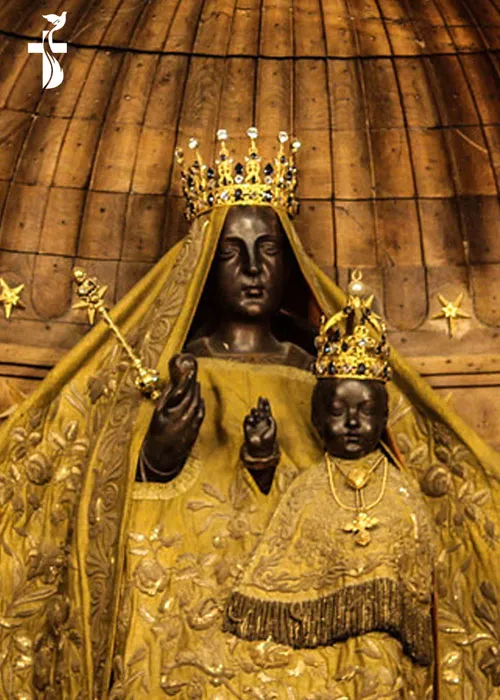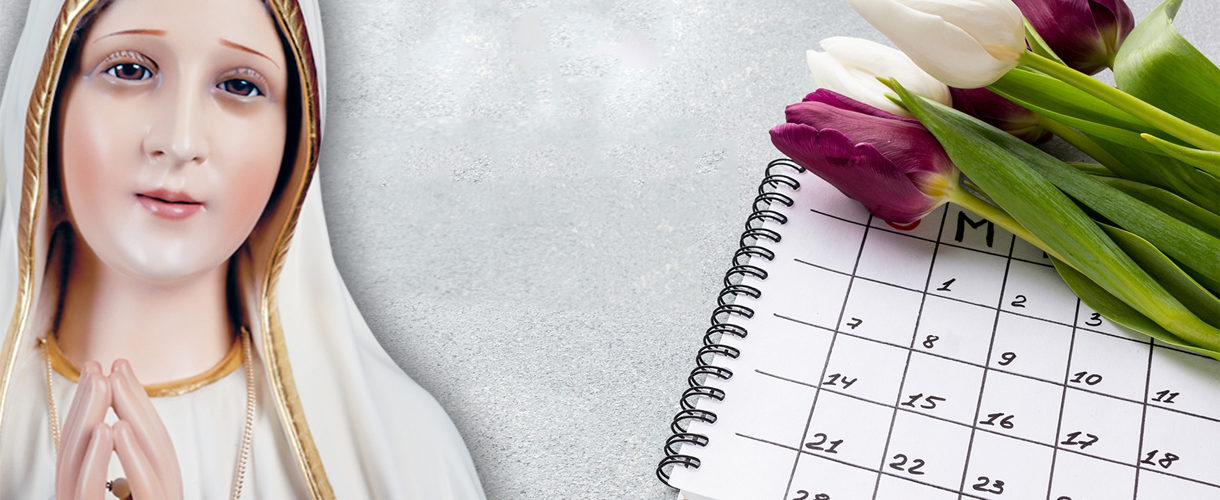
Our Lady Of Chartres
Country : Europe
Year : 1148
During the Middle Ages a movement was afoot in Europe, known as the Rosary of Churches. Cities, small towns and even villages vied with one another to rear cathedrals to Mary. Many of these churches have faded into oblivion; some still stand in all their untouched glory, treasure houses of ancient masterpieces of art, sculpture, glasswork and architecture. Their erection was entirely voluntary, a labor of love. Those who had means and riches gave of them; others gave their labor.
The oldest of these is Our Lady’s Cathedral at Chartres. Even before the Apostles arrived, there was a Celtic shrine at Chartres, dedicated to the Virgin who would bear a great King. A Church was built over this pagan shrine and in the church was enshrined the tunic which the Blessed Virgin supposedly wore while on earth, the gift of the Emperor Constantine. It was at Chartres, too, that St. Bernard pleaded in 1148 for crusaders to rescue the Holy Land. The Cathedral was destroyed many times, but in the eleventh century the real and lasting church was built with a forest of columns and a treasury of art, jewels and glass. It remains a “must” on the list of every pilgrim traveling to Europe.
A medieval bishop named Gulbert chose to build his city’s cathedral of Our Lady on top of the highest hill for miles around. He didn’t have much luck and three times his cathedral burned down. One of his successors began rebuilding the cathedral in 1250, when it was entirely completed in dressed stone it “needed to fear nothing from the world’s fire until Judgment Day”. It is the most important of the eighty cathedrals and nearly 500 cathedral-size churches the French people, with single-mindedness unparalleled in Church history, built in that fantastically artistic century 1170 to 1270. To these peasants, priests and poets in stone, the Cathedral was the House of God, the Bible in picture and image, and a canticle of praise. The Cathedral of Chartres stands out in unequalled significance, spelling in delicately carved detail and magnificently balanced volumes what the Christian faith meant to twelve centuries of Europeans.
Chartres contains the most famous stained glass window in the world; its predominant, unique, remarkable blue has defied the skill to describe of writers everywhere. The sacred figures come alive in the glass and the whole nave of the church is suffused with sifted light. Everything seen after this is an anticlimax; just as the Mother of God to whom this “other world” art is dedicated, is the epitome of virginity, Motherhood and womanhood, as all others of her sex pale into oblivion in the glorious light of her sanctity. This cathedral has a majesty and a magic about it that can still evoke memories of past unity and stir the imagination of an even larger vision. American and African, as well as European pilgrims can say “Our Chartres” and somehow feel that it is really theirs, just as the Mother of God is the Mother of ALL Mankind.



